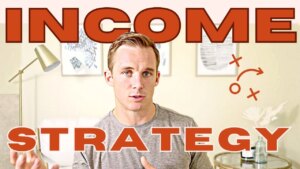A Real Estate Investor’s Journey to $200,000 Annual Cash Flow

Achieving financial independence through real estate investing is a tangible goal, as demonstrated by investor Dion McNeeley. Over 13 years, Dion built a portfolio that generates $200,000 in annual cash flow from just 16 rental units. His journey offers valuable insights into strategic property investment and effective financial management.
Building the Real Estate Portfolio
Dion’s approach focused on acquiring properties in stable neighborhoods with consistent demand, minimizing vacancies and ensuring steady rental income. He invested approximately $2 million over 13 years, contributing $500,000 of his own capital. This strategic investment allowed him to amass a portfolio that yields substantial annual revenue.
Revenue and Expense Management
The portfolio generates around $378,000 in annual revenue, averaging $1,970 per month per unit. Key expenses include:
- Mortgage Payments: $44,000 per year
- Property Taxes: $30,000 per year
- Management Fees: $22,000 per year
- Insurance: $25,000 per year
- Utilities: $25,000 per year
- Repairs and Capital Expenditures: $12,400 per year
By meticulously tracking these expenses, Dion maintains a clear understanding of his net cash flow, enabling informed financial decisions and effective portfolio management.
Strategies for Maximizing Cash Flow
A critical aspect of Dion’s success is his focus on reducing debt. By aggressively paying down mortgages, he lowered principal balances and monthly payments, thereby increasing net cash flow. Reinvesting profits to reduce expenses further enhanced the portfolio’s profitability. Prioritizing quality investments over sheer quantity resulted in lower operational costs and simplified property management.
Importance of Detailed Expense Tracking
Dion emphasizes the necessity of tracking every expense, regardless of size, to accurately assess the financial health of a rental business. Allocating funds annually for capital expenditures, even in their absence, ensures preparedness for future maintenance and unexpected costs, safeguarding the portfolio’s long-term sustainability.
Recommendations for Aspiring Real Estate Investors
For those aiming to replicate Dion’s success, consider the following steps:
- Develop a Detailed Financial Overview: Utilize tools to create comprehensive charts of current revenues and expenses, providing a clear picture of your financial standing.
- Set Long-Term Goals: Project your portfolio’s potential growth over the next 10-15 years to establish clear objectives and strategies.
- Determine Investment Approach: Decide between a low-expense, high-margin portfolio and a high-growth, leveraged portfolio based on your financial goals and risk tolerance.
By mapping out a detailed business plan and continuously refining investment strategies through diligent financial tracking, achieving financial independence through real estate becomes an attainable goal.
Dion McNeeley’s journey exemplifies how strategic planning, disciplined investment, and meticulous financial management can lead to substantial passive income and financial freedom.
All writings are for educational and entertainment purposes only and does not provide investment or financial advice of any kind.







